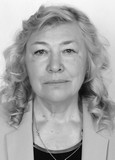Changes in muscle tension of body segments in children with cerebral palsy
Keywords:
cerebral palsy (CP), muscle tension, asymmetry, body segments, postures.Abstract
Objective of the study was to identify changes in muscle tension in body segments in children with cerebral palsy for an objective analysis of the state of their motor system and the search for effective methods of pedagogical influence on the muscular system in the process of rehabilitation measures.
Methods and structure of the study. Children from 6 to 14 years old with a diagnosis of cerebral palsy of varying severity took part in the scientific work. Children were distributed according to the levels of development of gross motor functions on the GMFCS scale. Muscle imbalance, their symmetry, as well as the degree of tension in the muscles of the face, back, back and front of the legs were measured. The studies were carried out using the MES 9000 EMG computer diagnostic system.
Results and conclusions. An uneven distribution of muscle tension in the muscle segments of the face and body was revealed, predominantly on the left side (from 34 to 160 mV) in both boys and girls diagnosed with cerebral palsy. Tension of the tibialis muscle of the left leg was noted, which was 135,2 mV and strong tension of the calf muscles of both the left (158,4 mV) and right legs (143,4 mV) with support compensation on the toe of the left leg (60%). Diagnosis of muscle tension and identification of the developmental features of skeletal muscles in children with cerebral palsy is a necessary condition for an objective analysis of the state of their motor system and the search for effective methods of pedagogical influence on the muscular system in the process of rehabilitation measures.
References
Blyum E.E. Biomekhanika. Metody vosstanovleniya organov i sistem [Biomechanics. Methods for restoring organs and systems]. M: Eksmo publ., 2020. 208 p.
Vasilyeva L.F. Prikladnaya kineziologiya. Vosstanovleniye tonusa i funktsiy skeletnykh myshts [Applied kinesiology. Restoring the tone and functions of skeletal muscles]. M.: Eksmo publ., 2019. 303 p.
Gross N.A. Pokazateli opornoy funktsii stopy v vertikalnom polozhenii tela u detey s dvigatelnymi narusheniyami [Indicators of the support function of the foot in an upright position of the body in children with motor disorders]. Teoriya i praktika fizicheskoy kultury. 2018. No. 11. pp. 33-35.
Gross N.A., Sharova T.L. Issledovaniye funktsionalnoy prisposoblennosti i ustoychivosti organizma pri prinyatii vertikalnoy pozy detey s DTSP [Study of the functional adaptability and stability of the body when adopting a vertical posture in children with cerebral palsy]. Detskiy tserebralnyy paralich i drugiye narusheniya dvizheniya u detey [Cerebral palsy and other movement disorders in children]. Proceedings Interdisciplinary Scientific and Practical Congress. M., 2018. 63 p.
Mitskevich V.A. Ortopediya pervykh shagov [Orthopedics of the first steps]. M: Laboratoriya znaniy. 3rd ed., 2018. 328 p.
Slesarev S.P. Vrozhdennaya i priobretennaya funktsionalnaya nedostatochnost myshts i svyazochnogo apparata [Congenital and acquired functional deficiency of muscles and ligaments]. Ortopediya, travmatologiya, protezirovaniye. 1981. No. 9. pp. 33-36.
McIntosh, J. E., Bogduk, N., & Pearcy, M. J. (1993). The effects of flexion on the geometry and actions of the lumbar erector spine. Spine, 18, 884-893.


